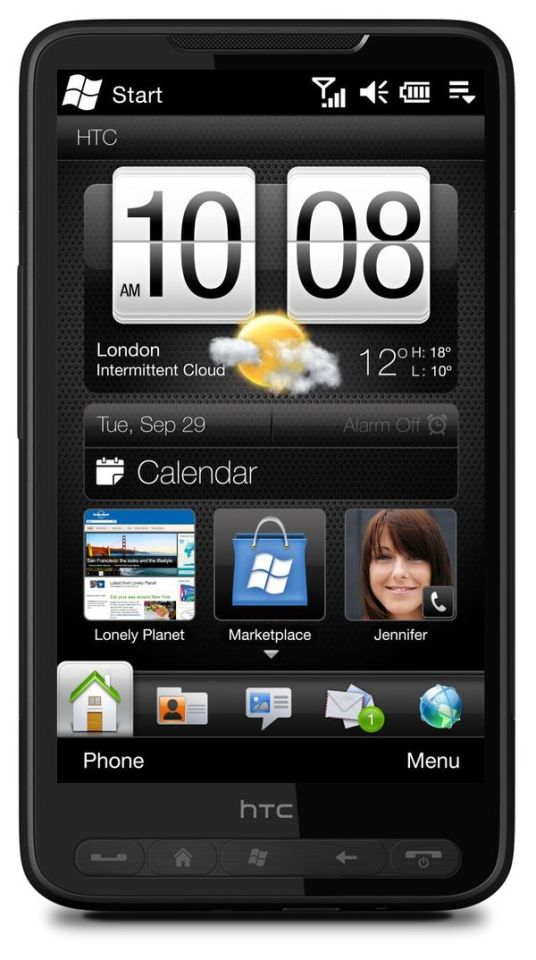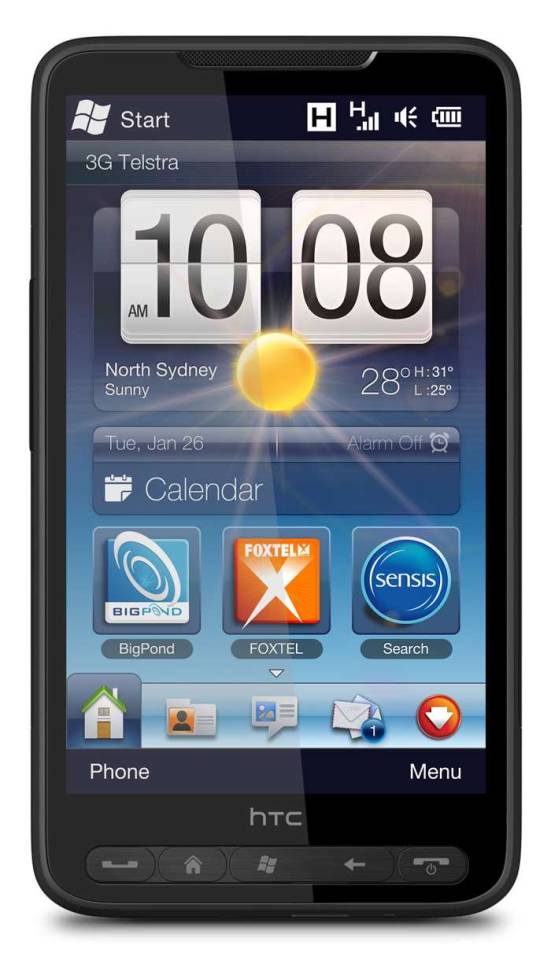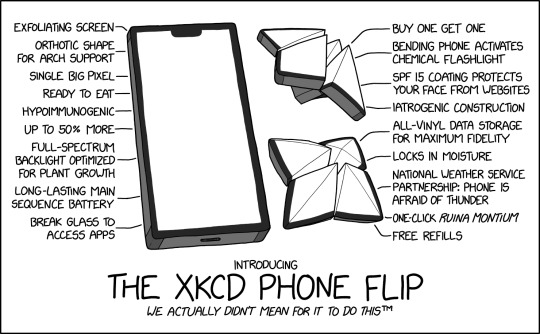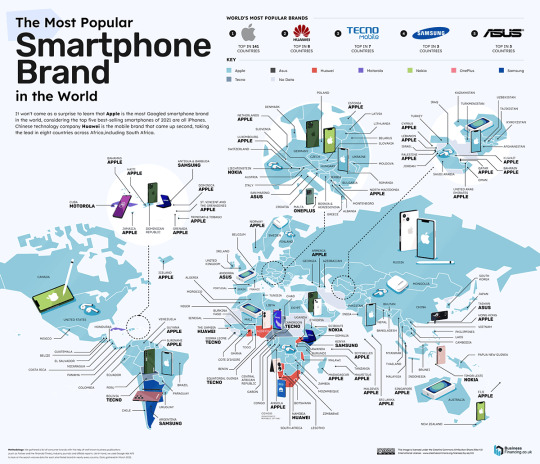#SMARTPHONES
Text
Nothing makes me more viscerally sympathetic to the "corporations decide what products people are going to want regardless of what people actually want" argument than the fact that all phones are giant tablets with no buttons. No one is making anything else, so everyone "has" to want one of those.
Except.
I really did care about this issue, so I looked into the details, and that's exactly backwards. When Motorola killed the Droid line of phones with slide-out keyboards, I went and read an interview with the product director. And he was like "yeah, I loved that feature, I really liked those phones, but we just couldn't get people to buy them."
And similarly, I'm always upset that no one is making reasonable-sized (under five inches) phones any more. But the thing is, when they do make those they can't sell them. For a long time Apple hung on with the mini line, which was the only thing that ever tempted me to do business with Apple. But they're discontinuing it because they just can't sell enough of them to justify keeping that line open—even though they have a total monopoly on the market for "small decent-quality smartphones".
These are both cases where the corporations keep trying to create demand for exactly the products I want. And it doesn't take because people authentically, organically, do not want them.
685 notes
·
View notes
Text
Since the year 2007, when the first smartphone debuted on the marketplace, over seven billion devices of the sort have since been manufactured. Their lifespans average less than two years, a consequence of designed obsolescence and a thirst to profit from flashy new features and capabilities. Meanwhile, the material and political conditions of their manufacture, and the resources required for their production, remain obscured. Under grueling conditions, miners tirelessly plumb the earth for the rare metals required to make information and communications technology (ICT) devices. Then, in vast factories like Foxconn located in the Global South, where labor can be procured cheaply and legal protections for workers are scant, smartphones are assembled and shipped out to consumers, only to be discarded in a matter of months, to end up in e-waste graveyards like those of Agbogbloshie, Ghana. These metals, many of which are toxic and contain radioactive elements, take millennia to decay. The refuse of the digital is ecologically transformative.
Steven Gonzalez Monserrate, The Staggering Ecological Impacts of Computation and the Cloud
120 notes
·
View notes
Note
Smartphones are a hyperfixation of mine and I'm just so happy there's someone out there who's like me who enjoys identifying phones
hell yeah!!!

75 notes
·
View notes
Text

#looks clean to me#Myou-chan-sensei wa Kaku Katariki#みょーちゃん先生はかく語りき#selfies#office chairs#smartphones
99 notes
·
View notes
Text



#art#cellphones#design#frutiger aero#graphic design#graphics#htc#icons#mobile#phones#smartphones#tech#technology#touchscreen#user interface#ui
234 notes
·
View notes
Text

Theranos partnership: Sorry, we know, but we signed the contract back before all the stuff and the lawyers say we can't back out, so just try to keep your finger away from the bottom of the phone.
xkcd Phone Flip [Explained]
Trancript Under the Cut
[A phone with multiple bits of text with pointers to it.]
Exfoliating screen
Orthotic shape for arch support
Single big pixel
Ready to eat Hypoimmunogenic
Up to 50% more
Full-spectrum backlight optimized for plant growth
Long-lasting main sequence battery
Break glass to access apps
[Two images of the phone folded up into a fortune teller, also with text.]
Buy one get one
Bending phone activates chemical flashlight
SPF 15 coating protects your face from websites Iatrogenic construction
All-vinyl data storage for maximum fidelity
Locks in moisture
National Weather Service partnership: phone is afraid of thunder
One-click ruina montium
Free refills
Caption: Introducing The xkcd Phone Flip
Subcaption: We actually didn't mean for it to do this™
325 notes
·
View notes
Text
55 notes
·
View notes
Text
EDIT: You can almost definitely slot most apps into one of the above options.
School app? Slot in with work app.
Transportation app, whether plane, train, or car? Rewards or financial, depending on if they have a rewards program.
Media hosting? I'll admit I should have thought of something like Libby before I made the post, but substack or spotify will fall into social media.
#apps#phones#smartphones#mobile apps#phoenix polls#personally my most recent was a geography game so I can gamify my learning of Countries I Don't Know
165 notes
·
View notes
Text
keeping objects as pets #5: smartphones and kin!
hi there! in this series, i’ll be going over basic descriptions of commonly-kept object species (and some rare ones too!), facts about them, why you might want one as a pet, their basic needs and necessities provided you want to house one, and things you should NEVER do. for the fifth post in this series, we’ll be going over smartphones and their closely related family!
note that while i primarily use the term smartphone in this post, it also applies to devices such as tablets.
description
smartphones, as the name implies, are typically square or rectangular and have quite flat bodies. they have thin, segmented, insectoid limbs, sharp teeth for cracking through exoskeletons, and no fur anywhere on their bodies. their hands have three fingers each, one acting as a "thumb", and have two toes per foot. these fingers are quite dexterous and adept at grabbing and holding onto their main source of food: insects. their 'screens' are made of a compound similar yet distinct from glass that is soft when they're first born and gradually hardens over the first few weeks of their lives. while normally able to protect their delicate organs from the elements, these 'screens' are very prone to becoming cracked and even shattered over time.
the backlighting on their screens may seem to come from LED lights, but it's actually a very bright form of bioluminescence that stems from chemical reactions in their bodies. if damaged, the structures that produce these chemicals will not grow back.
facts about smartphones
smartphones are a very social object species that tend to be more common near human settlements. they communicate primarily via pheromones that are impossible to sense to humans, but also have a wide language of clicks, chirps and other sounds to "speak" with each other through. unlike most objects, smartphones tend to gather around groups of unrelated object species - it's rare to see a group of smartphones together that aren't a family. they separate quite young from their family groups, at only around four weeks, but it is absolutely crucial that these objects are properly socialized. this is usually the case in the wild, but it can be hard to tell in shelters.
despite both mimicking human telecommunication devices, these objects are not closely related to flip phone objects. this is a case of convergent evolution.
why as a pet?
smartphones are very intelligent; in fact, most specialists will tell you that they're smarter than dogs. while i believe this is true to an extent, they are still animals and you shouldn't expect them to be all-knowing. that said, smartphones are very easy to train, and they are very compatible with most every other object type. these little guys love attention* and will stay by your side almost all the time. they're friendly, cute, and have lots of personality! they tend to be playful, curious animals. however, due to their diet, you may do better with a non-insectivorous species if you have a fear of insects.
basic needs + do's and dont's
these objects are insectivores: they need a steady supply of insects, specifically mealworms, to stay healthy. feeding larger things such as crickets, roaches and hornworms is okay for treats. i highly recommend using supplements to make sure their dietary needs are met. as "digital" objects, you may expect these to need recharging; DO NOT ATTEMPT TO PLUG ANYTHING INTO THEM. these are PURELY BIOLOGICAL CREATURES.
*it's important to note that these objects, while being naturally social and friendly, are prone to overstimulation. they have a bodily response that causes them to faint from extreme stress and must be handled appropriately to avoid overstimulating them. DO NOT USE THIS AS AN EXCUSE TO NOT INTERACT WITH YOUR PET. THESE ARE SOCIAL ANIMALS AND REQUIRE AT LEAST THREE HOURS OF INTERACTION PER DAY.
housing
due to their fragile anatomy, these objects MUST be kept indoors at all times. you should make it a priority to avoid letting your smartphone climb as even a short fall can cause shattered screens, especially in younger ones. also, because of their body shape, they can be prone to getting stuck in cracks and crevices, so you should minimize the amount of spaces where this can happen. i recommend having a dedicated area for their living space and allowing them supervised free roam time every day.
that’s all! hopefully this helps educate anyone who is considering this species!
#speculative biology#spec bio#spec evo#speculative evolution#object shows#osc#species info#object husbandry#object biology#digitals#phones#smartphones#tablets#ii mephone4#ii mephone4s#ii mepad#inanimate insanity#((uh. i know theres other phones from ii but i do not remember them. oops
30 notes
·
View notes
Text
***If you have a phone that’s a special edition version/collaboration version of a preexisting model, for the sake of this poll pretend it’s the regular model (unless if it has different hardware from the base model, in which you should select the date the special edition version came out
If you use two or more smartphones on a regular basis, use the newest one for this poll
If you used to own a smartphone but no longer do (taken away, lost, broken beyond the point of repair, etc etc), you can still answer the poll if you remember what the model is
#smartphones#phones#polls about smartphones#polls about phones#polls about technology#tumblr polls#polls#my polls
21 notes
·
View notes
Text
even more random youtube videos i enjoy
I promise this story about fonts is interesting
a goofy history of classic doctor who (1963-99)
Legends Summarized: Arthur's Knights
merlin being sassy for 15 minutes straight
The Curious Life of a Mars Rover | Nat Geo Live
The Experimental Phones of the 2000s…
the criminally underrated costume design of Jennifer's Body
8 Terrible Science Takes
Hands (2024) | A Student Short Film on Female Friendships (Shot on Sony FX6 & FX9)
Stanford Computer Scientist Answers Coding Questions From Twitter | Tech Support | WIRED
#youtube#recommendations#video recommendation#fonts#bbc merlin#doctor who#classic who#arthuriana#mars#mars rover#national geographic#tech#2000s#smartphones#phones#science#short film#friendship#scishow#hank green#coding#computer science#kaye recommends#kj post
31 notes
·
View notes
Text
Erin Reed at Erin In The Morning:
Yesterday, news broke that transgender woman and computer pioneer Lynn Conway passed away at the age of 86. Her story is nothing short of remarkable. Conway helped pioneer early supercomputers at IBM but was fired after she transitioned. She went “stealth” and had to rebuild her career from the ground up, starting as a contract programmer at Xerox with “no experience.” Then, she did it all over again, pioneering VLSI—a groundbreaking technology that allowed for microchips to be made small enough to fit in your pocket, paving the way for smartphones and personal computers. In 1999, she broke stealth, becoming an outspoken advocate for transgender people.
Conway first attempted to transition at MIT in 1957 at the age of 19 years old. At the time, the environment was not accepting enough for transgender people to do so. She would have faced enormous barriers to medical transition, as few doctors were knowledgeable enough to prescribe hormone therapy a the time. Like many transgender people seeing enormous barriers to care, she spent the following years closeted.
Eventually, she was hired by IBM where she helped develop the world’s fastest supercomputer at the time on the Advanced Computing System (ACS) project. The computer would become the first to use a “superscalar” design, which made it capable of performing several tasks at once, dramatically improving its performance and making it much faster than previous computers. Despite her pivotal role in the project, she was fired when she informed her employer that she wanted to transition.
What she did next is nothing short of remarkable. Realizing that as an openly transgender woman in 1968, few companies would hire her, she went “stealth” and pretended she had no significant prior experience in computers. She quickly advanced through the ranks and was hired by Xerox, where she famously developed VLSI, or Very Large Scale Integration. This groundbreaking technology allowed for thousands of transistors to be packed onto a single chip, revolutionizing electronics by making cell phones and modern computers possible through miniaturization and increased processing power.
Conway didn’t stop there. After gaining fame for her computer innovations, she came out in 1999 to advocate for transgender people. She was among the early critics of Dr. Kenneth Zucker, an anti-trans researcher still cited today by those working to ban gender-affirming care. Conway slammed Zucker for practicing “reparative therapy,” a euphemism for conversion therapy. Notably, Zucker’s research continues to make false claims that “80% of transgender kids desist from being trans,” numbers based on his clinic's practices, which closely mirrored gay conversion therapy. That clinic has since been shut down over those practices.
RIP to Lynn Conway. She was a tireless fighter for trans rights in a time that publicly supporting LGBTQ+ causes (let alone trans causes) wasn't popular, and that led to her firing from IBM in 1968.
Conway helped develop the supercomputer while at IBM, and later on at Xerox, helped developed microchip technology found in cell phones. 🏳️⚧️🏳️🌈
20 notes
·
View notes
Text
So you’ve written that our attention is getting fracked. What do you mean by that?
D. GRAHAM BURNETT: Fracking. I suspect most of your listeners have heard that term. Fracking is mostly associated with this idea of getting petroleum resources out of the earth. But it’s a new technology for doing that. In the old days, pre major exploitation of petroleum resources, there were these big, juicy zits of high-value crude oil just sitting there in the earth, waiting to geyser up if you tapped them. Drill a hole — whew, gusher.
We’ve tapped all that out. The only way you can get the remaining petroleum and natural gas resources out of the deep earth is to pump down in there high pressure, high volume detergent, which forces up to the surface this kind of slurry, mixture of natural gas, crude oil, leftover detergent, and juice and nasty stuff, which you then separate out, and you get your monetizable crude.
This is a precise analogy to what’s happening to us in our contemporary attention economy. We have a, depending on who you ask, $500 billion, $3 trillion, $7 trillion industry, which, to get the money value of our attention out of us, is continuously pumping into our faces high-pressure, high-value detergent in the form of social media and non-stop content that holds us on our devices. And that pumping brings to the surface that spume, that foam of our attention, which can be aggregated and sold off to the highest bidder.
— D. Graham Burnett, from “Ezra Klein Interviews D. Graham Burnett” (NY Times, May 31, 2024)
20 notes
·
View notes
Text




Retro iOS App Icons
#apple#art#design#frutiger aero#graphic design#graphics#icons#iphone#mobile#phones#queuetiger#smartphones#technology
166 notes
·
View notes
Text
...You know, it says a lot that we haven't seen much moral panic over how smartphones seem to be leading to widespread computer illiteracy amongst the yonger generations, given that (at least from what I've been seeing) that's actually true.
Maybe that's a social fear we should push on a little harder, if only so we can fucking do something about it.
Like, at the very least we should start actively shaming boomer parents (who can afford it) that treat an Iphone as a substitute for a decent laptop/desktop, and making actual resources for teaching kids how to use real-ass computers instead of Android/Iphone bullshit...
46 notes
·
View notes
Text

The Most Popular Smartphone Brands in the World.
Source and details >>
72 notes
·
View notes